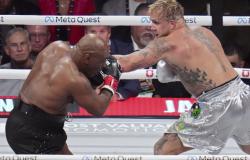Unification is a perennial topic of interest among Korea watchers, but it has been particularly popular — and confusing — in recent months, with North and South Korea each sending diametrically opposed signals.
South Korean President Yoon Suk-yeol delivered a rare speech dedicated to unification on Liberation Day, 15 August 2024, reaffirming Seoul’s commitment to unification and even telling Pyongyang that South Korea would ‘keep the door to inter-Korean dialogue wide open’. This was despite Kim Jong-un’s announcement at the end of 2023 of a new two Koreas policy, which defined North and South Korea as ‘two belligerent states’ and discarded the decades-long policy of peaceful unification.
There was much speculation following the October 7–8 session of the North Korean parliament, the Supreme People’s Assembly, about whether the assembly had indeed revised the constitution to remove unification-related language and define North Korean territory according to Kim’s instructions in early 2024. Pyongyang subsequently implied that it made at least one revision related to inter-Korean issues — defining South Korea as ‘a hostile state’ — but it remains unknown whether it made other related amendments.
North Korea never responded to Yoon’s Liberation Day speech, indicating a lack of interest in improving relations with Seoul. To the contrary, Kim himself reacted quickly to Yoon’s Armed Forces Day parade speech on 1 October 2024, even leveling an unusually direct nuclear threat that the North would ‘use without hesitation all the striking forces in its possession, including nuclear weapons’, against South Korea if its sovereignty was violated.
Dialogue with North Korea — however desirable and necessary — is unrealistic for the foreseeable future. This raises the question of what is the best way forward.
Kim’s two Koreas policy is here to stay. It is a result of a fundamental policy reorientation that occurred over a period of more than four years, going back to the breakdown of the Trump-Kim Hanoi summit in 2019. Kim’s call for the development of tactical nuclear weapons and the revised nuclear law, which implicitly expanded the scope of nuclear strike targets to South Korea, were just two of multiple indicators.
Pyongyang’s South Korea policy change should be viewed within the broader context of its foreign policy reorientation. North Korea has given up its three decade-long policy of normalisation of ties with the United States through denuclearisation — distinct from a lack of appetite for normalisation of relations altogether — and, by natural extension, its policy of nonalignment with China and Russia.
Kim’s decisions seem to increasingly be driven by the opportunities he sees in great power competition and the shifting geopolitical landscape, giving him even less motivation to improve relations with South Korea. Pyongyang’s policy towards the United States was almost certainly affected by what it perceived to be waning US leadership on the global stage due to US–China competition and a ‘multipolar’ global order.
North Korea’s relations with Russia have reached new heights since Putin’s invasion of Ukraine, as evidenced by their new bilateral treaty. We should note that Kim announced the new South Korea policy in the midst of his ever-blossoming relations with Putin. This relationship probably emboldened Kim to trash the concept of unification, his forefathers’ legacy and one that has been deeply ingrained in the North Korean people’s minds.
For as long as the current circumstances persist, the most realistic way for South Korea to manage relations with the North — and the potential for US–China competition and deepening Pyongyang–Moscow relations to amplify North Korea’s growing nuclear threats — is to balance deterrence with clearer signals for dialogue.
Priority should be given to strengthening deterrence. In that vein, South Korea should continue to make efforts to advance its weapons systems. Seoul should continue to strengthen its alliance with the United States and work with it to maintain the credibility of extended deterrence. It should also step up trilateral security cooperation with Washington and Tokyo.
It is important to remember that muscle-building in and of itself cannot be the goal of deterrence — the goal is to maintain peace and lay the groundwork for future diplomacy. Accordingly, Seoul should redouble its efforts to signal to North Korea that its interest in dialogue is genuine.
The first step to doing this is for Seoul to tone down on the themes that Pyongyang finds hostile — such as North Korean human rights and right of access to information — in its public messages specifically targeting North Korea. It is important for South Korea to continue to take the lead in working on these issues with the international community. But these themes do not have to be emphasised in messages that are intended to resonate with North Korea.
Seoul should also learn from the lessons of the past that North Korea will not trade its nuclear weapons for economic compensation. The Lee Myung-bak administration’s Vision 3000: Denuclearisation and Openness and Yoon’s ‘Audacious Initiative’, both of which sought to incentivise North Korea to denuclearise through economic compensation, failed. It is time to recognise that North Korea’s strategic interests have changed, understand the reasons for this shift and craft viable policy options that work for both sides.
Striking the right balance between deterrence and dialogue is not an easy task. But if Seoul can bring itself to be a little more flexible, it may be in a better position to deal with North Korea when the country is ready to start engaging.
The time for diplomacy may arrive after January 2026, when North Korea is expected to hold its next quinquennial Party Congress and review and recalibrate its domestic and foreign policy.
Rachel Minyoung Lee is Senior Fellow for the Stimson Center’s Korea Program and 38 North.
Source: East Asia Forum






